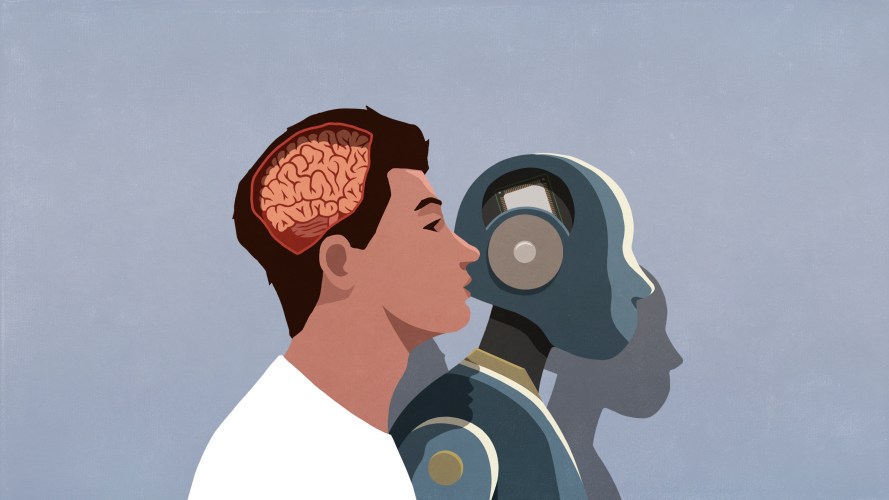Generative AI is just scratching the surface in this new era of AI. We are knocking on the door of superintelligence, which promises to radically change our world as we know it. But what does that word even mean, when will it be here, and how will it affect everyday customer interactions?
In his new book, The Coming Wave, Mustafa Suleyman, co-founder of Deep Mind and Inflection AI, claims that artificial general intelligence (AGI), or superintelligence, is all but inevitable. He gives a fascinating glimpse into the future.
AGI is the point where computers perform any human cognitive task at the same level, or better, than the smartest human, and take action on a broad, multi-disciplinary scale. For example, if given a budget of $1,000 with a task to create a one million dollar business, the AGI will do everything from creating the business plan to executing the required steps to get there. It will alter almost every facet of our daily lives in ways that are hard to imagine.
But there’s an important stepping stone towards AGI, — Suleyman calls it artificial capable intelligence (ACI) — which is defined by achieving human-like intelligence in narrow topics, and taking action on them with minimal human oversight.
So what might ACI look like and when will it happen? It might be closer than you think. Let’s explore a couple scenarios.
What if superintelligence ran your marketing campaign?
Imagine having an autonomous AI agent that is a marketing expert. What if you gave it the following task: “Promote this new line of hiking boots. Your goal is to optimize the marketing budget to be most effective, maximize sales, and minimize return rates.”
As the autonomous marketing agent springs into action, it devises a marketing plan based on CRM data of the existing audience, and creates an awareness campaign. It generates ad copy and images specific to each customer, fine-tuned to their purchasing behavior and profile, and also negotiates the media buying plan (with other autonomous bots).
As the campaign progresses, the AI self-improves with every impression and conversion, generating A/B tests and adjusting segmentation on the fly. Humans are in the loop for quality control, but most of the safety checks are also controlled by AI as the volume of generated content is simply too large for humans to handle.
This scenario is not far-fetched at all, and could be achieved at scale in the near future. But what if we took it a step further …
What if superintelligence ran an entire product lifecycle?
To get closer to ACI, let’s imagine a broader task. What if your instructions this time were “Create a new line of hiking boots, from design, through sourcing, managing the supply chain, production, marketing and shipping.” You would give it your brand guidelines, company values, and budget.
The AI would be able to create countless designs in a blink of an eye, test ideas with existing customers, communicate with factories, source materials, initiate production, and finally market and ship the product directly to consumers. All this with minimal human intervention.
Need help with your generative AI strategy?
Whether you’re just starting out with AI or already innovating, this guide is your roadmap to delivering a trusted program blending data, AI and CRM. The goal? Helping your teams focus on high-value tasks and build stronger customer relationships.



You can imagine how these ACI agents will proliferate across businesses, moving beyond individual tasks that people augment with AI today to running much more complex processes. But to do that, they would need to be connected to CRM data, ERP data, supply chain data, and so on. This is why it’s so important for organizations to ready their data today for tomorrow’s AI. Businesses that will thrive in the era of AI will be the ones that have the best infrastructure to run these ACI agents.
What about true AGI superintelligence?
AGI is harder to predict – people can’t even agree how to define it, or know to define when it will be here. But due to the fact that there is virtually unlimited potential to scale up this technology, it seems all but inevitable. It’s likely to be a gradual process, but the milestone promises both huge gains for humanity — like helping solve climate change and discovering cures for diseases — as well as grave concern that reaches existential proportions.
That is why in March, more than 1,100 signatories, including Elon Musk and Center for Humane Technology co-founder Tristan Harris called for a pause on AI development (which never happened – it actually accelerated!) and the Center of AI Safety released a statement in May that “Mitigating the risk of extinction from AI should be a global priority alongside other societal-scale risks such as pandemics and nuclear war.”
It’s not clear what scenarios will transpire, but what is clear is that this future is approaching at an accelerated velocity. The businesses of the future will have AI integrated in every line of business, running tasks more efficiently, optimizing processes and driving new revenue channels.
If you didn’t know that you were talking to an AI service agent, would that be considered ‘superintelligence’? Is that the new Turing test, which determines whether a distinction can be made between a human and a machine. What if I told you that this blog post was entirely conceived and written by AI, and marketed specifically for you? It wasn’t. But I probably had you second guessing for a moment.




























